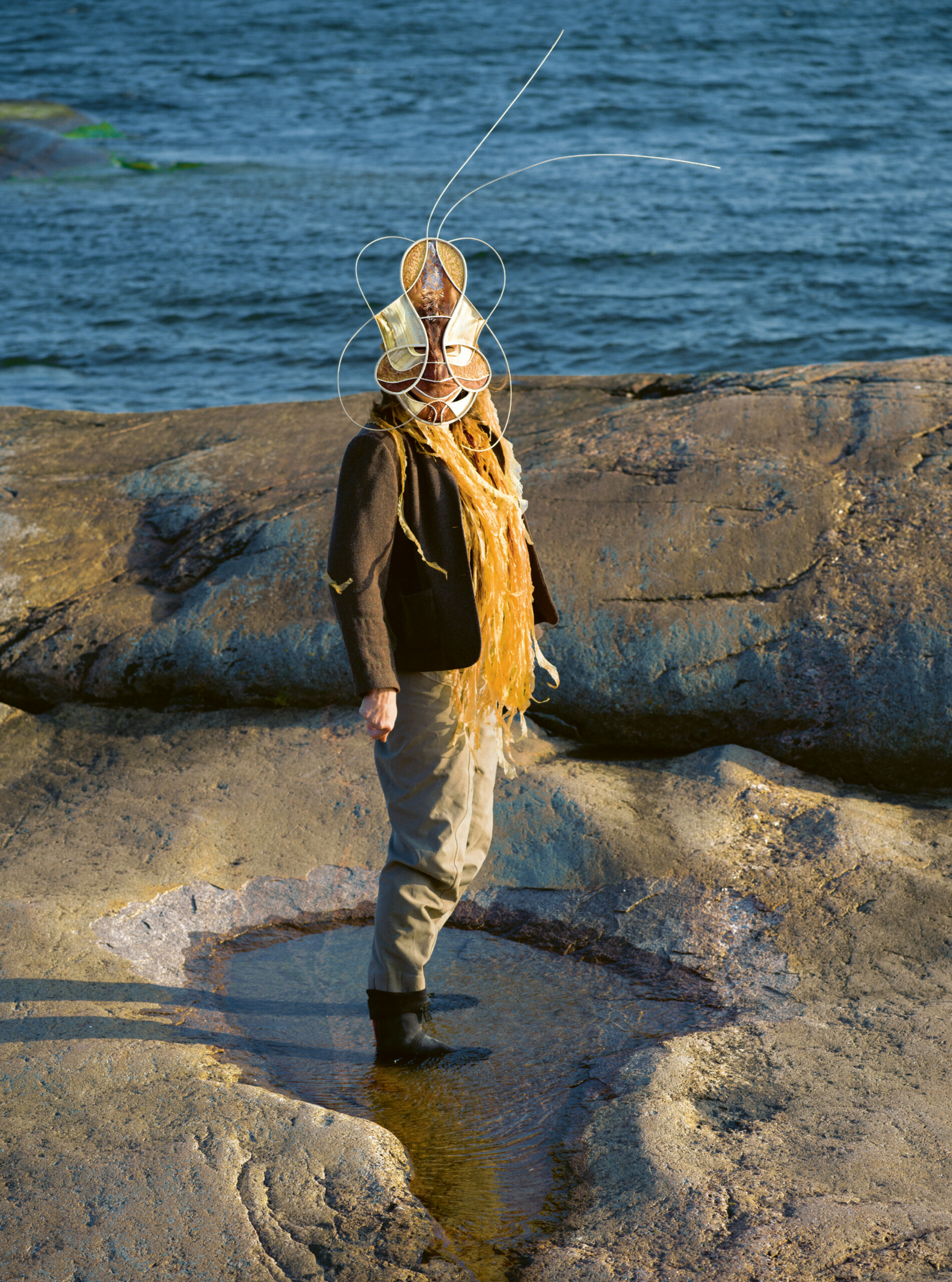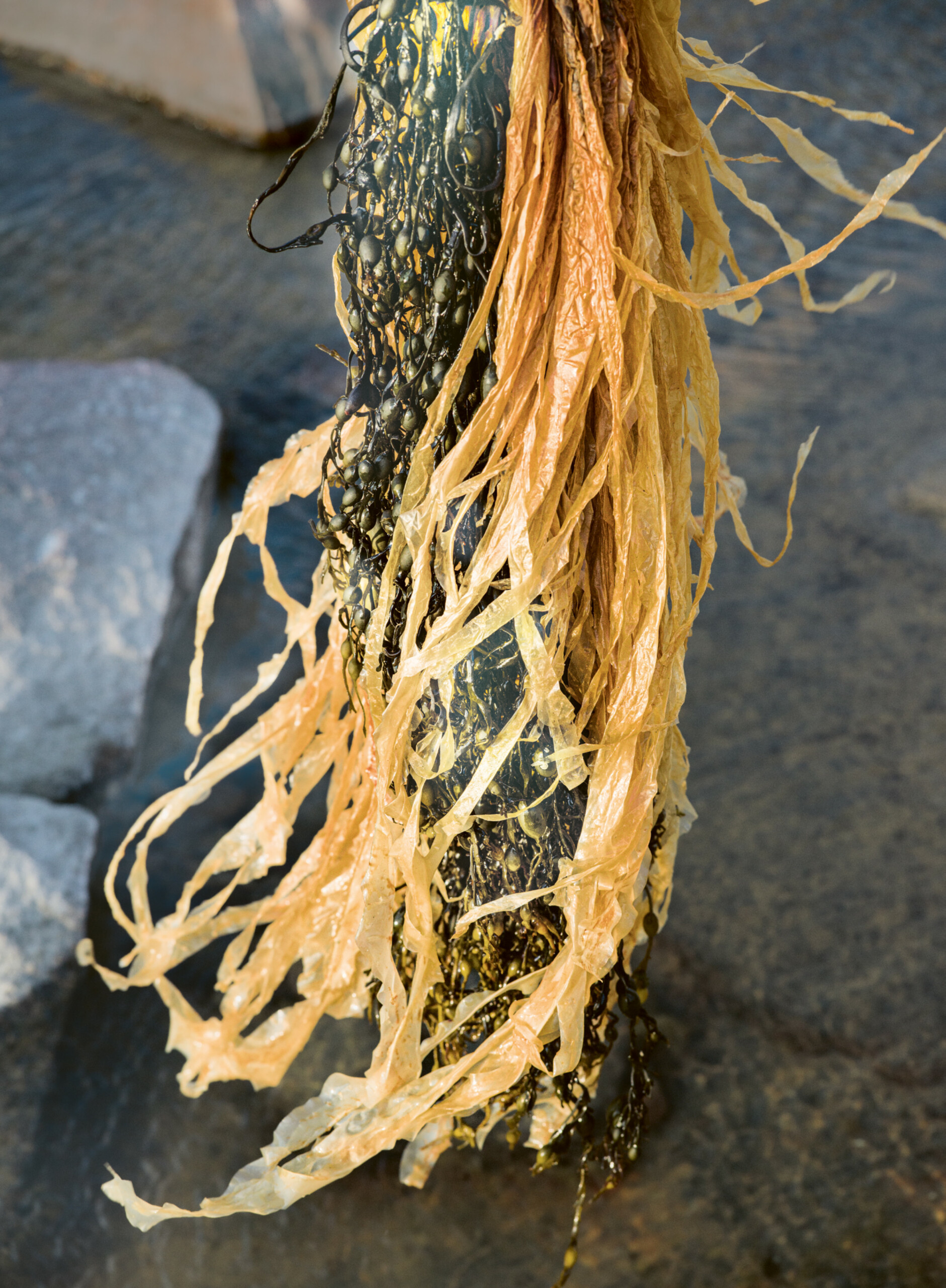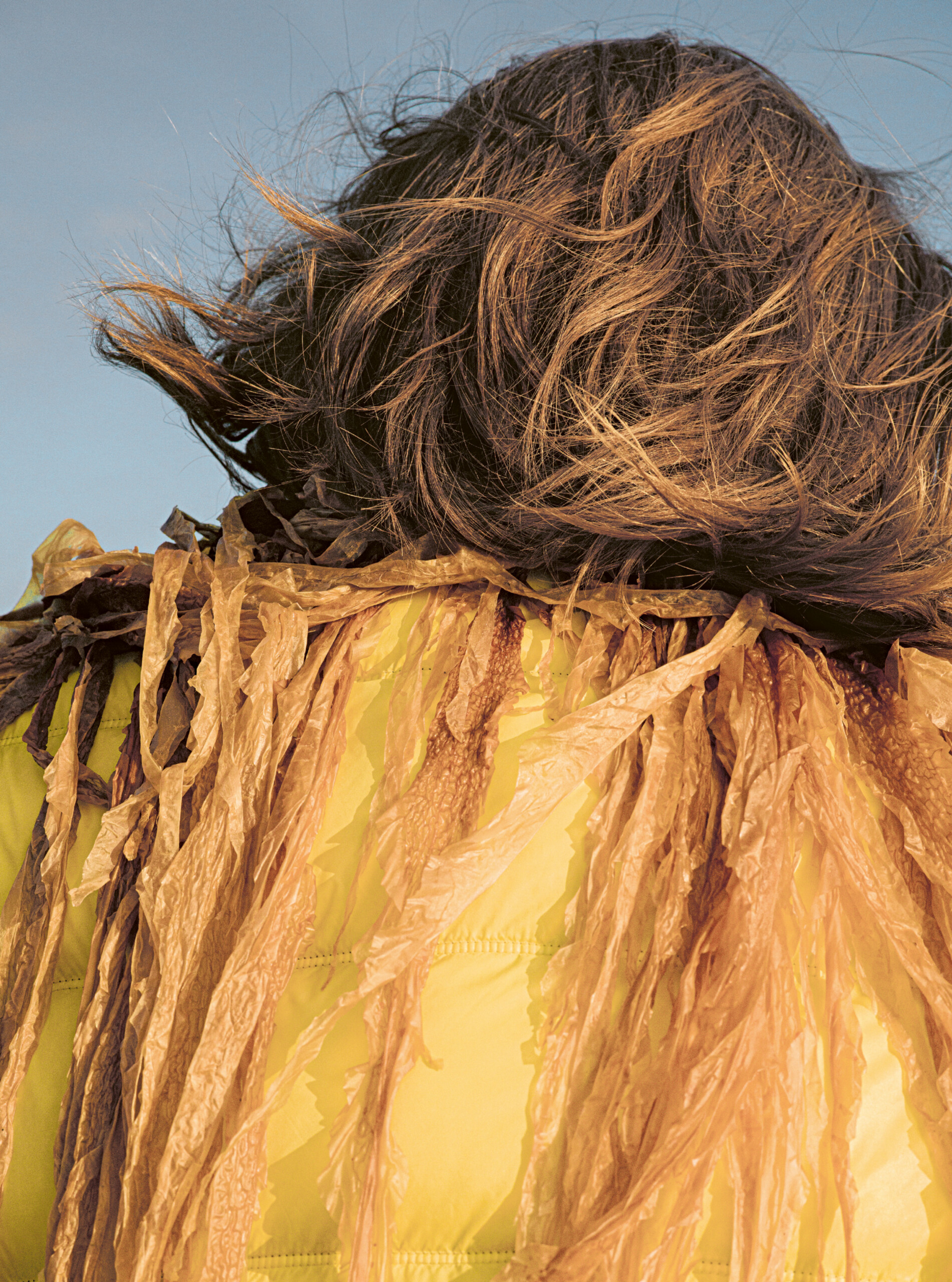Re-Design of the Ocean
Julia Lohmann

Julia Lohmann
Sea Ceremony
Julia Lohmann’s broadly based understanding of the concept of design leads us to the denizens of the deep. Having recently moved to Finland, one of the Nordic countries surrounded by sea, she champions the preservation of this habitat and believes that critical design practice can be used to direct attention to the needs and interests of these non-human beings. Lohmann had begun to explore and experiment with seaweed long before its current status in the spotlight and its acclamation as an organism, habitat regenerator, superfood and sustainable material. In her “Department of Seaweed” project, founded in 2013, she brings together experts working in the fields of design, craft, science and anthropology to rethink approaches to material research and fields of application. In doing so, she abandons all the conventions classically imposed on design.


“We urgently have
to rethink everything we do”
Julia Lohmann
I call Julia Lohmann in Helsinki in the evening. Finland is an hour ahead of where I am in Germany, and her children are already in bed. We dive straight in as she reports she is planning a trip to the Lofoten Islands to attend a kelp congress. Fascinated, I ask her to tell me more about this seaweed-focused event. The programme is part of the Lofoten International Art Festival (LIAF). Although described by the LIAF website as addressing the current discourse surrounding seaweed as potential material for energy, food, nutrition, (...) medicine and cosmetics, it does not seek to portray the perspective of industry. Instead it examines seaweed as a protagonist and collaborator within artistic and curatorial ways of making and as a partner for cultural response within current and future ecological and environmental discussions. The congress is based on results from three workshops conducted under artistic guidance, including one by Futurefarmers, an international collective of artists, activists, researchers, farmers and architects who collaborate to propose alternatives to the social, political and environmental organisation of space. The closing ceremony will be held by Lohmann as a sea ceremony. Inspired by the Japanese tradition of tea ceremonies, it is designed to open up a moment of contemplation and appreciation for these marine plants and provide participants with a multi-sensory experience of algae, as well as an opportunity for them to reflect on and share their own thoughts and findings from the workshop.
A marine plant as design material
German-born Lohmann received a master’s in Design Products from the Royal College of Art (RCA), London, in 2004. Many years ago, while on an SAIR artist’s residence programme in the Japanese city of Sapporo, she had wondered why the Japanese rarely used seaweed although it was so plentiful there. This initial observation grew into a lifetime project for Lohmann, and her critical approach to the material still dominates her work today. The first Department of Seaweed was a large room converted into a laboratory at London’s prestigious Victoria and Albert Museum, where visitors could watch her perform experiments on marine algae as guest designer. The idea of showcasing the research carried out by the designer in the setting of one of the world’s oldest craft museums was unique, but an extremely logical and appropriate one given the museum’s emphasis on human material culture from its inception. To complement traditional museum displays of materials such as glass, metal and ceramics, the Department of Seaweed brought topics of cutting-edge relevance into focus that were related to natural raw materials and our relationships with them.
Lohmann’s experiments were aimed at transforming seaweed as a material, bringing to it qualities such as the transparency of glass, the flexibility of leather or the stability of wood veneer. Over time they resulted in the creation of a completely new material, which she then used to create works including impressively large-scale sculptures. She viewed herself not merely as a shaper of forms, a designer with the sometime goal of creating industrially manufactured products from marine algae, but as a materials researcher and explorer, seeking to highlight the aspect sof design work that are concerned with critical questioning or research. As early as 2012, she was quoted in Gareth Williams’ book 21 Twenty One: 21 Designers for Twenty-First Century Britain as saying, My aim is to develop objects that spark questions about how we interact with our environment, how we consume resources and why we design.
Please select an offer and read the Complete Article Issue No 8 Collection Issues No 7, 8, 10 Subscriptions
Already Customer? Please login.
